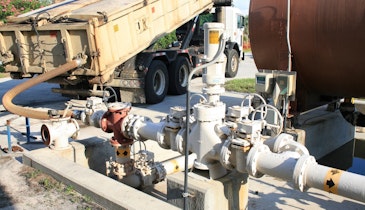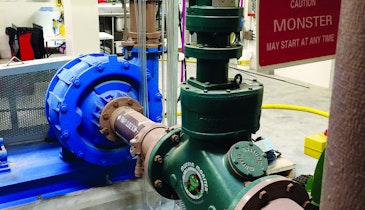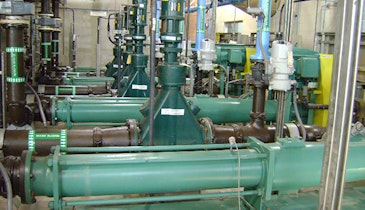The Coeur d’Alene wastewater treatment plant has been in operation since 1939, making it one of the earliest examples of a municipal secondary-level treatment facility in the world. Since then, the facility has been overhauled significantly to keep up with demand, area growth and innovations in wastewater treatment technology. The treatment plant was having continual problems with two sludge macerators, in part because of the durability of the macerator.
During design, someone misread the max psi rating as 150 — while the macerator’s true max pressure rating is 30 psi. Eventually, one of the macerators exploded and flooded the underground pump area with sludge.
“They were facing more costly maintenance if they continued to use macerators on sludge,” says Dale McBain, an equipment representative with APSCO who advised the facility on solutions. “With dual-shafted grinders you get increased grinding power and longer service life. You don’t have to worry about them.”
It took about 12 hours for operators to clean up the mess after the macerator exploded. The crew pulled a Muffin Monster grinder from their backup stock, and it took care of the sludge immediately. Impressed with the performance and quality of the Monster grinder, the treatment plant manager requested approval to purchase three additional 10K series Muffin Monsters. With the macerators, operators were performing maintenance every 120 hours (every five days). With the Muffin Monster the team can perform a simple visual inspection every few weeks and the plant hasn’t had any issues with ragging or backups.
.jpeg)
Since 1982, the plant has undergone 11 major “phases” of construction, culminating with solids handling and administration buildings. These projects added new anaerobic digesters, sludge gravity thickeners, belt filter presses for biosolids dewatering, plastic-media trickling filters with solids contact tanks, secondary clarifiers, a chlorine contact tank, dechlorination with sulfur dioxide, a chemical systems center for phosphorus removal and foul air treatment with compost-bed biofilters. Some of the original 1939 structures are still used today.
Located along the Spokane River and set among large evergreen trees, the city of Coeur d’Alene treatment plant has some of the toughest treatment requirements in the nation. The facility must meet strict nutrient limits to protect the river and a downstream drinking water reservoir. In 2010 the facility’s headworks was upgraded and includes two new bar screens with 1/4-inch openings and two of JWC’s Screenings Washer Monsters.
Designed by HDR Engineering, the headworks includes model SWM3018 washer compactors which receive rags from the screens via a sluice system. Inside the Screenings Washer Monster debris is ground, washed, separated, compacted and dewatered as it is pushed up and out of the discharge tube and into a dumpster — ready for landfill disposal. Operators noted the SWM’s discharge is remarkably clean, dry and free of fecal material. The cleaned screenings look like slightly damp, shredded newspaper. Plant personnel even fashioned their own rotating sluice pipeline to switch between the two SWMs. To help balance the load and extend equipment life, each system is run for one month and then an operator rotates the pipeline and screenings fall into the other SWM.
For more information on the Muffin Monster and Screenings Washer Monster, visit www.jwce.com.





